NEWS
Your LaserDiscs Could Be Worth $250 Or More – Here’s Where To Sell Them
How to find LaserDisc values and where to sell them so you can cash in at top dollar
February 26, 2019
Do you have LaserDiscs that haven’t been out of their cases since the late 90’s? Did you inherit a box of old LaserDiscs from a relative, snag a few from a garage sale, or stumble across a stack in your basement? Your old LDs might be worth up to $250 or more. Here, we show you how to find out how much your LaserDiscs are worth and where to sell them.
Contents
- How much are LaserDiscs worth?
- What makes LaserDiscs valuable?
- How to find LaserDisc values
- Where to sell LaserDiscs
- LaserDisc selling tips
How much are LaserDiscs worth?
LaserDisc values run the gamut, anywhere from less than a dollar for common titles to $1,000 and up for rare collectible LaserDiscs. According to the LaserDisc Database – operated by Julien Wilk and largely considered the preeminent authority on LaserDisc values – ten of the most valuable LaserDiscs are currently:
| LaserDisc | Format | High Bid |
| Tokyo Raiders | (2000) [NTSC/LBX/AC3] | $5,700 |
| The Cell | (2000) [NTSC/LBX/AC3/Uncut] | $2,500 |
| Madonna: The Video Collection 93:99 | (1999) [NTSC] | $2,000 |
| The Limey | (1999) [NTSC/LBX/AC3] | $1,900 |
| My Dinner with Andre | (1981) [NTSC] | $1,000 |
| Neon Genesis Evangelion: The Movie: Limited Box | (1997) [NTSC/LBX/SRD/CAV] | $1,000 |
| Takeshi Kitano: Supervision Work Collection | [NTSC] | $1,000 |
| Ozu: Post-War Schochiku Full Collection | [NTSC] | $1,000 |
| Blade Runner: Director’s Cut | (1992) [NTSC/LBX/SRD] | $999 |
| Pulp Fiction | (1994) [NTSC/LBX/SRD] | $999 |
Note that these are not necessarily the most valuable LaserDiscs in the world; rather, they represent the 100 LDs on the LaserDisc Database that have the highest current bids.

Source: Julien Wilk
At those prices, you’d need to find a special buyer: a true collector who is willing to spend that much for a single LaserDisc. In addition, those LDs aren’t necessarily the most desirable to collectors, as evidenced by the top ten titles on the LaserDisc Database’s top 100 wish list:
| LaserDisc | Format | High Bid |
| The Matrix | (1999) [NTSC/LBX/AC3] | $160 |
| Tron: Archive Collection | (1982) [NTSC/LBX/SRD/CAV/THX] | $50 |
| Ghostbusters: Special Edition: Criterion $75 | (1984) [NTSC/LBX/SRD/CAV] | $25 |
| The Evil Dead: Special Collector’s Edition | (1981) [NTSC/AC3/+CAV] | $50 |
| Akira: special Edition: Criterion #151 | (1988) [NTSC/LBX/SRD/Bilingual/CAV] | $20 |
| Evil Dead 2: Dead By Dawn: Special Edition | (1987) [NTSC/LBX] | $50 |
| Star Wars: The Phantom Menace | (1999) [NTSC/LBX/AC3/THX] | $35 |
| The Last Starfighter: Signature Collection | (1984) [NTSC/LBX/AC3] | $250 |
| Pulp Fiction: Special Edition: Criterion #271 | (1994) [NTSC/LBX/ACE/+CAV/THX] | $50 |
| South Park: Bigger, Longer and Uncut | (1999) [NTSC/LBX/SRD] | $150 |
As you can see, collectors are only willing to pay around $20 to $50 for many of the top wish list items.

Source: Julien Wilk
This doesn’t mean these are the only valuable LaserDiscs, or that some LDs aren’t worth more than the selections listed here (remember, we’re displaying the current highest bid, not the selling price – many sellers are asking for more than the current bid, so the final prices, or values, might be something in between).
Some notable recent eBay sales include:
- Daicon III and IV: $1,000
- Stigmata: $536
- End of Days: $472
- Beethoven: Classical Music Album 24-LD set: $500
- The Golden Age of Looney Tunes Volumes 1-5: $400
- The Beatles Ultimate Live Collection Tour Years 1964-1966: $324
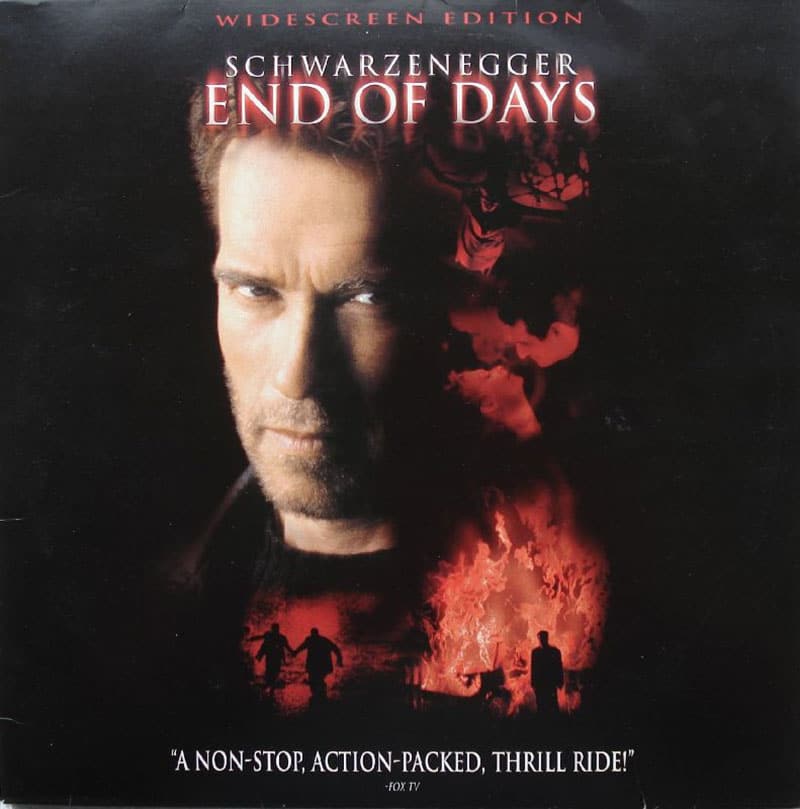
Source: Julien Wilk
Average sales prices for some other notable LaserDiscs, taken from the LaserDisc Database, include:
- South Park: Bigger, Longer and Uncut: $110 (mint)
- Terminator 2: $437 (sealed), $251 (mint)
- X-Men: $480 (mint)
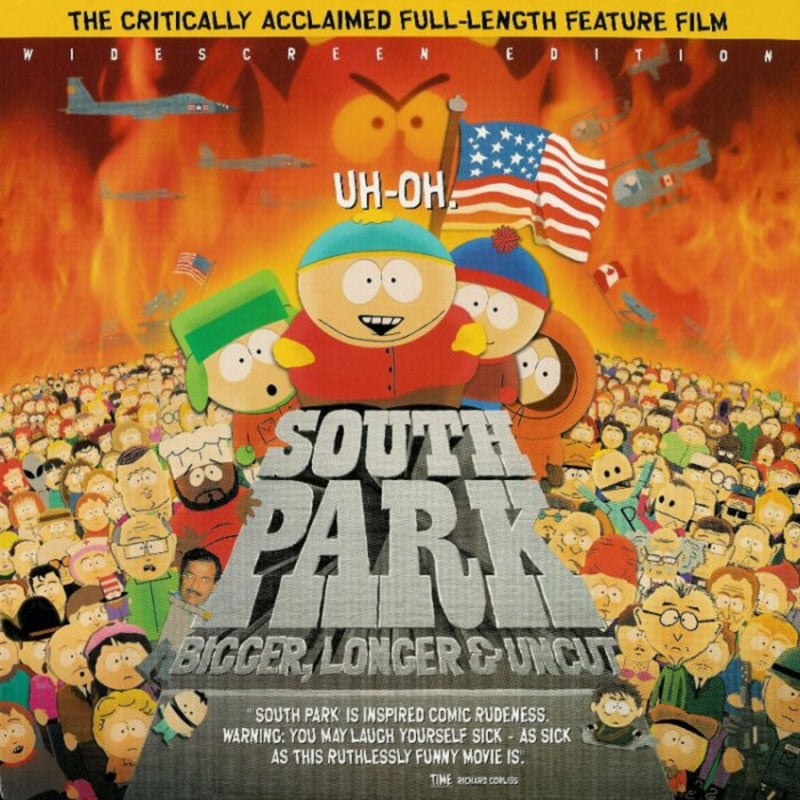
Source: Julien Wilk
These prices demonstrate what some LaserDiscs are worth, but they don’t tell the whole story. You’ll need to do some digging if you want to find out if your LDs have any value.
What makes LaserDiscs valuable?
A variety of factors affect LaserDisc value, including:
Rarity and demand
First and foremost, a LaserDisc must be rare and in high demand by collectors. The classic laws of supply and demand dictate the market: if a lot of collectors want a given LD, but there are few to be found, they become more valuable.
“There’s a dichotomy; the common movies have gone down to a buck and you can’t give them away,” says Mark Astengo. “The expensive LaserDiscs doubled in price every year, up to a point, and now you can’t find them. They might have only made 100 or 500 pressings, so even if you’re willing to pay $2,000, you can’t find them because collectors hoard them.”
Affectionally called “DaDon” by his friends, Astengo has bought and sold more than 80,000 LaserDiscs and once held the world’s largest LaserDisc collection. He currently owns more than 50,000 LDs, many of which are for sale on his website, DaDon’s Rare LaserDiscs.
“Unlike vinyl records, the market for new LD players stopped completely years ago and the last LD was produced around 2001 or 2002, so this is really a collector’s niche market,” says Wilk. “The ‘Holy Grails’ tend to be very late US and Japanese releases, produced in small numbers, sometimes only available as mail pre-orders.”
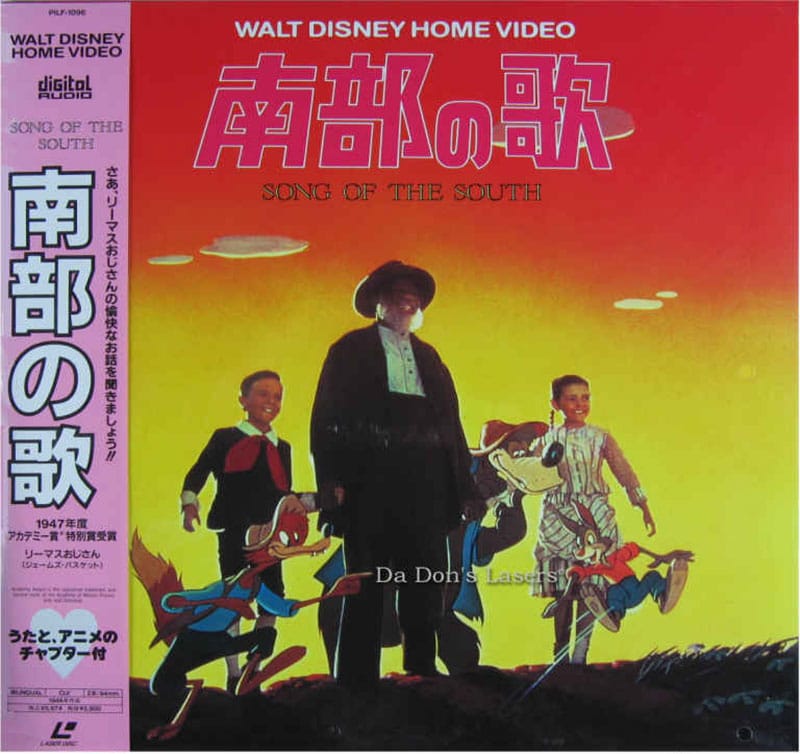
Source: Mark Astengo
Wilk said some LaserDiscs are valuable because their content is not available on other formats, such as DVD and Blu-Ray. Others had their contents altered when transferred to DVD, making titles such as the original Star Wars trilogy a popular LaserDisc series even though it was mass-produced and not difficult to find.
Disney’s Song of the South is another movie that’s available on LaserDisc but not DVD, according to Astengo.
“Song of the South had a lot of bad humor that was fine in the 50s but would not be considered funny today,” says Astengo. “Disney never put it on DVD because they knew it would get so much backlash.”
He explains that three pressings were made of Song in the South: two in Japan, one in Hong Kong.
“Of the two made in Japan, one is analog and one is digital,” he says. “The analog version, in perfect condition, is worth $100 to $200, ballpark. The digital version is worth $200 to $400. Now, the Hong Kong version is worth around $1,500. Why? It doesn’t have Japanese subtitles, and collectors and crooks alike like it because they can make copies of it.”
Other reasons some movies weren’t transferred to DVD or Blu-Ray include a limited market, lost masters, or a refusal to release rights.
“If you know anything about Hollywood, it’s all about rights and egos, and both are very big there,” says Astengo. “So, if somebody wants to put a movie on LaserDisc, they need to get permission because it’s on different media. They go to the agent, and they say no – it only takes one person to say ‘no’ and they can’t release the movie or they’ll get sued. Sometimes someone died and the rights are tied up in an estate. Sometimes a woman had a nude scene and she doesn’t want it re-released. There are a lot of reasons some movies didn’t make it to DVD.”

Source: Julien Wilk
Astengo estimates that at one time there were around 4,000 movies that were on LaserDisc but not DVD, but he figures that total has dwindled to around 2,000 today.
Another factor that can make a LaserDisc rare and in demand is if it is autographed by a celebrity.
“It’s always fun to bring a few LaserDiscs to a concert and try to get them signed,” says Wilk. “Most of the time the artists have no idea their work has been released on LaserDisc, and they usually sign them happily.”
Country of origin
Foreign releases, in particular Japanese releases, can be very valuable. Many of the top bid examples given above are Japanese releases, including The Cell.
“The Japan-only Analog HD format ‘Hi-Vision LaserDisc’ is highly sought after by collectors with the proper hardware devices to watch them,” says Wilk. “Their HD masters were usually also released in NTSC as ‘squeezed’ or video master for 16/9 screens natively, like most DVDs would become over time. They can fetch several thousand dollars if in mint or new condition.”
Astengo concurs: “Japanese LaserDiscs on average tend to have better quality, and it would show in their transfers. The Pioneer Japanese pressings – the house pressings where they made the LaserDiscs – tended to have a better reputation for not having issues. So, in addition to remastering, they were well-known for being better at manufacturing LaserDiscs.”

Source: Mark Astengo
Video and audio formats
Video and audio formats can influence LaserDisc values. LDs released in widescreen editions, for example, are more valuable than full screen editions – especially if they were never released in widescreen on DVD.
“As a category, LaserDisc video is always analog,” says Astengo. “The advantage is that, in a motion scene, they’re wonderful and look realistic. Because it’s analog, you effectively have an infinite number of colors, so it’s more like reality. The early DVDs suffered from color banding, so you could see the color bands on the screen.”
There are eight different LaserDisc audio formats, listed here in order from worst to best:
- Analog
- Mono analog
- Stereo analog
- Mono digital
- Stereo digital
- Dolby Digital
- Dolby Digital AC-3 5.1 and 6.1
- DTS Stereo
- DTS 5.1
Dolby Digital, AC-3, and DTS soundtrack releases are typically in the highest demand. LaserDiscs in Dolby Digital AC-3 6.1 are among the rarest, as only 12 or so titles were ever produced in that audio format. Star Wars Phantom Menace is one example.
“All of these things matter, and collectors know it,” says Astengo. “If a LaserDisc is available in Dolby Digital and DTS, the DTS is more realistic. It has good low ends and high ends. If you watch Jurassic Park in DTS it will shake your floors.”
You also need to make sure what you have is indeed a LaserDisc, since CED and VHD formats look similar and can be confused for LDs.
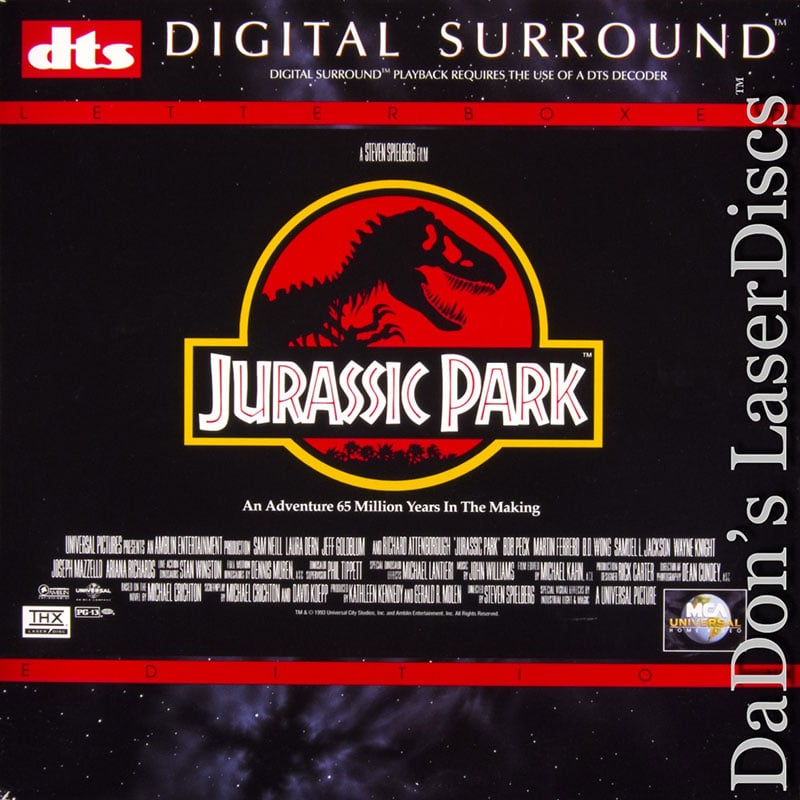
Source: Mark Astengo
Content
LaserDisc content also plays a major role in value. Sought-after franchises like Star Warsoften command good fees, though the increased value is typically due to a combination of content along with some other qualifier, such as a unique format or foreign release.
Popular music acts on LaserDisc can likewise be valuable, from classical musicians to modern rockers.
Obscure horror titles are also often in demand.
Keep in mind some collectors are motivated to buy LaserDiscs as secondary items to their main collections; for example, a collector of Star Wars memorabilia might be interested in Star Wars: Phantom Menace for its ties to the franchise, and not necessarily because it’s a valuable LaserDisc.
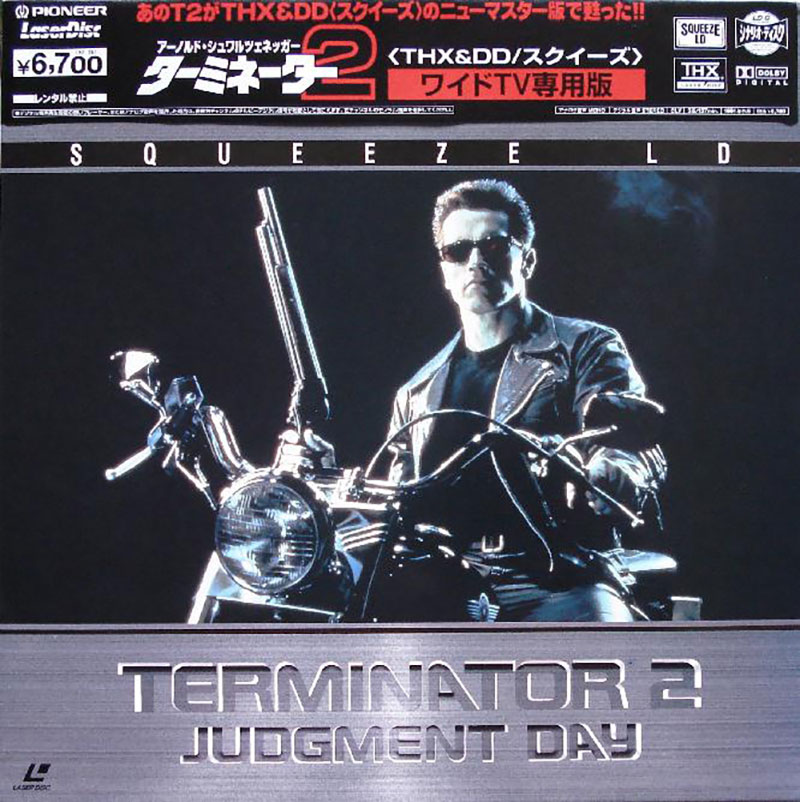
Source: Julien Wilk
Version
As mentioned, many LaserDiscs are available in multiple versions – each with its own value.
“For one specific movie, there may be 15 pressings; for another movie, there may be only one,” says Astengo. “Sometimes, pressing number one is better; sometimes, pressing number two is better. Disney was well-known for this. They would have the same exact catalog number, but there would be two or three different versions. One would be analog, another would be digital, another would be cut different, or sometimes one would have an error and they pressed another because they didn’t want to admit it.”
Since different versions can have identical catalog numbers, the only way to tell which version you have, in many cases, is to study the cover.
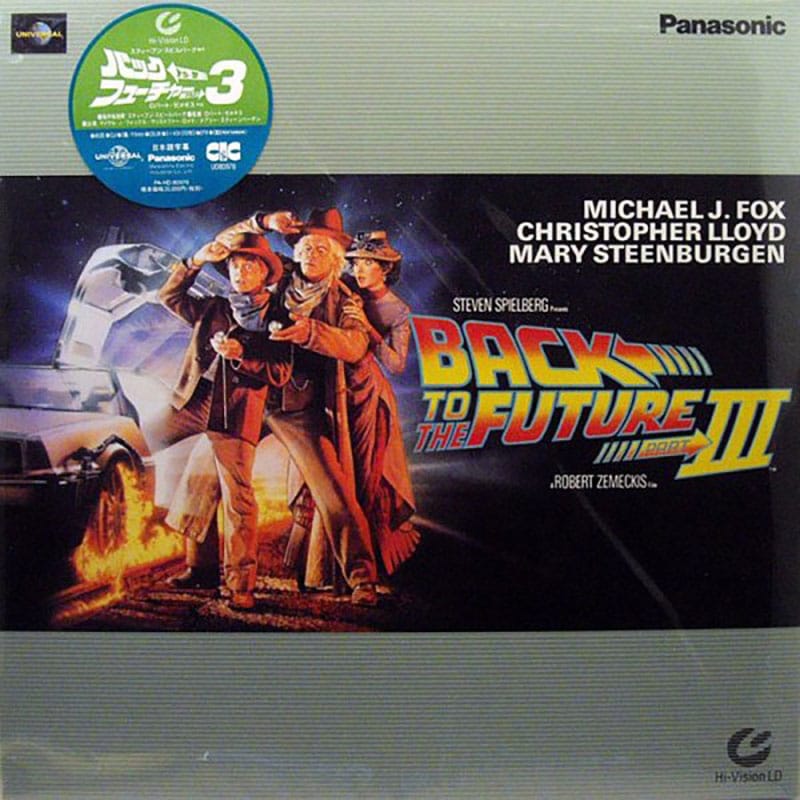
Source: Julien Wilk
Special editions
Special editions – at least, those respected by collectors – can be valuable. Titles in the Criterion Collection, which include add-ons and special features, are usually worth good money, especially as box sets. Demo discs can likewise be valuable.
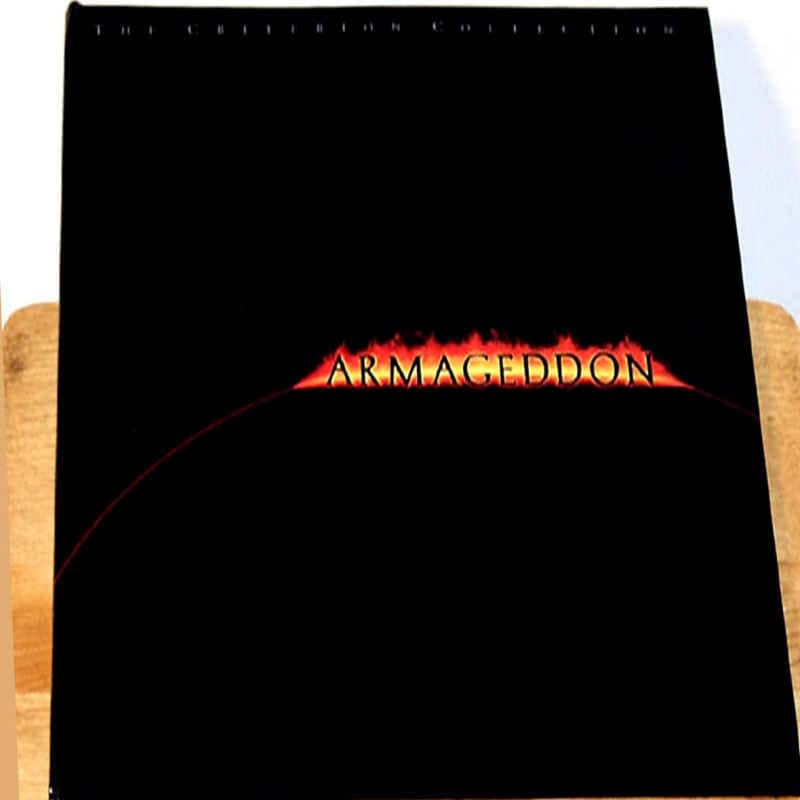
Source: Mark Astengo
Condition
LaserDiscs that are still sealed and in mint or new condition are worth more money. Both the cover and the disc itself need to be in excellent condition to command top dollar.
A common problem is “laser rot,” in which poor-quality pressings deteriorate and cause playback glitches.
“Some titles were manufactured with below-average quality control and will develop laser rot over time,” says Wilk. “The aluminum layer gets oxidized due to a porous glue holding the two sides of an LD together and it will translate, when played, into random sparkles on the screen and even deteriorated audio. The only way to check for this is to play the disc.”
Being able to confirm your LDs are laser rot-free is important, as buying discs as-is or from those who do not have LaserDisc players to test for laser rot adds an extra layer of risk for buyers.
“Some buyers will look for better pressing quality, and usually you have to turn toward the Japan releases – if you don’t mind burnt-in subtitles,” says Wilk.
The cover art should likewise be free from blemishes, cracks, and tears.
Wilk offers a guide to grading LaserDisc conditions on his website; here’s a synopsis:
| Grade | Description |
| New/Sealed | |
| 10/5-star | Factory sealed with no holes or bending |
| 9/4.5-star | Sealed, with some discoloration or discs starting to punch through spine |
| Mint/Near Mint | |
| 8/4-star | Plastic removed, plays flawlessly |
| 7/3.5-star | Shows minor signs of wear, but plays flawlessly |
| 6/3-star | Shows minor scuffs and finger marks, insert missing, but plays without issue |
| Used/Heavily Used/Damaged | |
| 5 to 1/2.5- to .5-star | Scratches, scuffs, obvious damage, cover could be missing |
The condition of your LaserDisc covers is as important as the condition of the discs themselves.
“I’ll have people call me up and say their dad took care of his collection, then they send me a picture and it looks like someone did the La Bamba on it,” says Astengo. “They don’t understand that the jackets have to be like new today for collectors to want them. They think it’s all about the movie, but no, the collectors love the jackets.”
How to find LaserDisc values
The value of a LaserDisc or LaserDisc collection is simply what a seller will pay, so the best way to figure out how much your LaserDiscs are worth is to study historical sales data.
There are two ways to do that:
Check prices on the LaserDisc Database
Search by title or catalog number for your LaserDiscs to see what their current high bids are, what others are selling them for, and to research historical sales prices.
Be sure to study your LaserDisc thoroughly and read the listing data so you’re sure to compare apples to apples.
In this screenshot for the movie Fight Club, you can see the database lists:
- Country
- Release date
- Publisher
- Picture and ratio
- Audio encoding
- Subtitles
- Condition
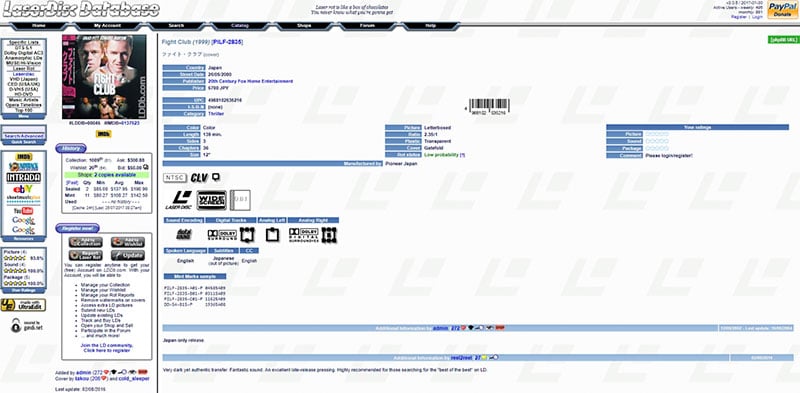
If you look on the left sidebar and click “Past,” you can see detailed historical pricing data:
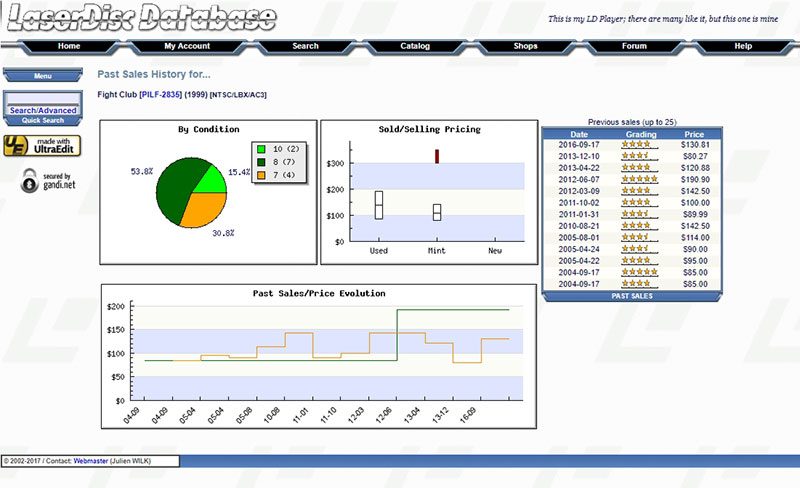
In this case, we can see that 4-star copy of Fight Club sold in September of 2016 for $130.81. If your copy matches the features and condition, you can use this figure as a baseline for ascribing value.
You can repeat this process for every LD in your collection.
Check eBay recently sold listings
Search for your LaserDisc on eBay, select “Sold Listings,” and see if a copy of your LD has recently sold and for what price.
Again, you’ll need to compare the listing details to your LD to make sure you’re comparing apples to apples. If you are, you can try to sell your LD for the same amount.
eBay doesn’t display historical sales data as far back as the LaserDisc database, but it is a good source for researching recent sales and for verifying price ranges.
“It’s a tricky process and partly the reason why I set up the LaserDisc Database, since some titles were released again, and again, and again with minor differences each time, such as remastered video, upgraded soundtracks, in box sets, and CAV,” says Wilk. “eBay keeps recent transactions available for a little while, but they disappear quickly. It’s best to do a daily search to see what’s coming in and out. Items sold on social media don’t leave a trace. That’s why LDDb always retains all transaction history, for pricing purposes. One can locate the specific release at-hand and find out how much it’s selling for and how much it sold for previously.”
Where to sell LaserDiscs
Since LaserDiscs are such a niche collector’s item, it can be more difficult to find buyers for LDs than for, say, DVDs, vinyl records, and even VHS tapes. Where you sell your LDs depends on what you have and how much time you want to invest into selling.
“It depends how big the collection is,” says Wilk. “If it’s a mixed bag of very common titles, it’s probably better to just float it on eBay as a box (lot) with a quick list of contents. If the seller has more time, then each title can be looked up on LDDb. If some are indeed valuable, they will be worth the extra time to list them individually.”
LaserDisc selling options include:
Online marketplaces
Online forums
- AV Forums
- Home Theater Forums
- Facebook Groups
Local options
- Craigslist
- Facebook Marketplace
- Local retailers, flea markets, retailers and pawn shops
LaserDisc selling tips
The following tips will help you get the most money for your LaserDiscs.
1. Know what you have
Do your research to understand what you have and what it’s worth. It’s the best way to ensure you get a fair price for your LaserDiscs, and a good way to temper your expectations if your LDs aren’t particularly valuable.
2. Protect your LaserDiscs
Keep your LaserDiscs in good condition before you sell them; and, if you’re shipping to buyers, take care to package them properly to avoid damage in transit.
LaserDiscs should be stored in a smoke-free environment with low humidity, placed in resealable covers and stored vertically. Covers are compatible with LP frames, so attractive artwork can be displayed on walls.
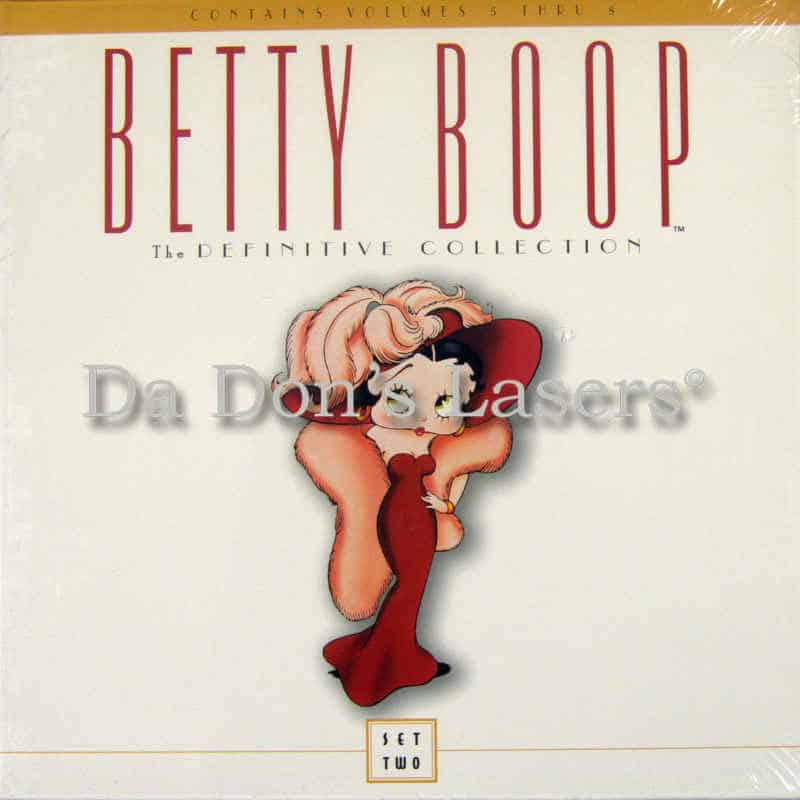
Source: Mark Astengo
Shipping LaserDiscs requires special considerations.
“The hard part with selling LaserDiscs is that they are fragile and require very careful packing. The covers will get crushed and split easily, and discs can get warped or broken,” says Wilk. “The worst you could get are ‘pizza boxes’ recycled as-is with a LaserDisc inside, or a single layer of newspaper or bubble wrap: damages guaranteed.”
Wilk says double-boxing or double-layering cardboard with extra space for the corner is the minimum you should do before you ship your LDs.
“LaserDiscs are made of a slippery polycarbonate, then are placed in plastic. It’s a recipe for disaster,” says Astengo. “When they’re shipped, they shift back and forth in the plastic and make a white mark or punch through the cover.”
The problem led Astengo to tap into his physics background to develop “bullet-proof boxing” for LaserDiscs.
“I designed double-box packaging so they didn’t get damaged, and this is why real collectors have stayed with me over the years,” he says. “I have a Hollywood movie star – I can’t say the name – who is building a special collection for his movie theater. He recently bought around 12,000 LaserDiscs from me, and he has stayed with me because he got so much crap from other people.”
3. Understand shipping fees and who will pay them
If you’re shipping your LDs, be sure to make it clear who is paying the shipping fee: the buyer, the seller, or a split. Also take into account any packaging costs and insurance, should you choose to purchase it (and this would be recommended for valuable items).
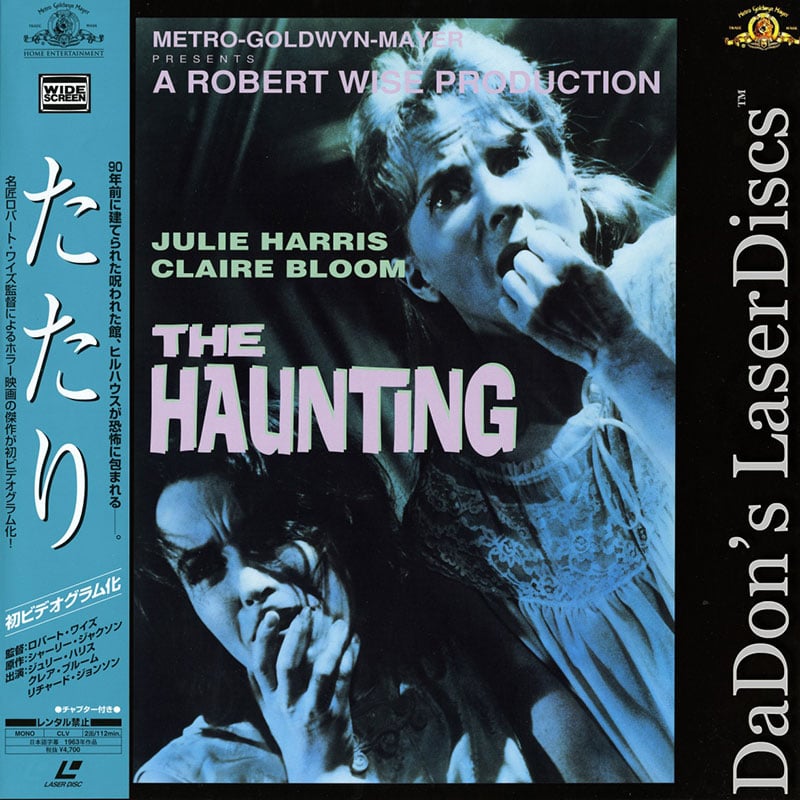
Source: Mark Astengo
4. Compare multiple options
Before you commit to selling, be sure to compare your options thoroughly. Determine which selling channel offers the right experience for you: which one might pay the most, which offers the fastest sale, and which offers the greatest convenience. By comparing your options, you can make an informed decision and enjoy the best selling experience for your situation.
“LaserDisc buying and selling is probably not a money-making business for everyone,” says Wilk. “It requires access to a regular, cheap supply of LaserDiscs via bulk sale with a careful appreciation for which titles might be worth the effort. But, if you do inherit an exotic collection or get them for free, there’s no harm in turning them into a few bucks.”
Read More:
https://flipsy.com/article/1045/sell-laserdiscs?utm_campaign=laserdiscs&utm_term=laserdiscs

 then "Add to Home Screen"
then "Add to Home Screen"